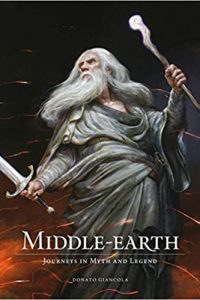Paul Di Filippo Reviews Under the Hollywood Sign by Tom Reamy
 Under the Hollywood Sign, Tom Reamy (Subterranean 978-1-64524-131-7, hardcover, 544pp, $50.00) May 2023
Under the Hollywood Sign, Tom Reamy (Subterranean 978-1-64524-131-7, hardcover, 544pp, $50.00) May 2023
I got my first subscription to The Magazine of Fantasy and Science Fiction in 1967. By the mid-seventies, I was a veteran F&SF reader, basking in the flow of new and familiar names. What a vintage era, under the editorship of Ed Ferman (who would later ennoble me and enlist me in his pantheon by buying several of my early stories). But even amongst that illustrious company, certain tales leaped out at me, dragging their associated authors into the limelight. Several stories, all by the same fellow, had that effect. “San Diego Lightfoot Sue.” “The Detweiler Boy.” “Twilla.” I came to count on the byline of Tom Reamy as an indicator of high quality, unique visions. (Reamy had gotten his writing start in fandom, and his zine Trumpet, now digitized, offers insights into his origins.). When his first novel, Blind Voices, appeared, I snaffled it right up.
And then, somehow, I learned he had died. What a shock. Rather like one of the many tragic endings Reamy himself had penned. (He was not a light or comic writer, although there are patches of black humor in his stuff, as we shall see.). The memory of the stories remained with me, but began to fade. And for several generations of readers younger than I, the name came to mean nothing at all, I suspect.
Now Subterranean Press is here to remedy this injustice, and to restoke my own appreciation of Reamy. They have gathered up nearly all of his short fiction into a knockout volume that holds up incredibly well. This book instantly becomes a canonical brick in the fantastika edifice. The original appearances all span an incredibly short interval, some of it posthumous—copyrights are 1974 to 1981; Reamy died in 1977—so there’s a definite post-hippie, Jimmy Carter, Bicentennial vibe to the material, reflective of the genre as it was then constituted and enacted. But there’s also an element of eternality to these tales, just as with the best of Poe or Bierce, M. R. James or Blackwood.
Let us amble through them, before attempting to generalize.
“Twilla” is told from the POV of a no-nonsense old maid elementary school teacher who might have stepped out of a Zenna Henderson story, and starts out overall like one of her tales of the People. But as soon as death and sexual depredations occur, and the occult rears its head, all resemblance to Henderson is out the window.
The topic of gay sexuality, as then understood and portrayed, infuses “Under the Hollywood Sign”, as it does a couple of other stories herein. I have no idea of what Reamy’s personal sexuality was, but I suspect he was writing from his own predilections and lived experience. In any case, the tale is a sordid, Jim Thompson-style descent into an underworld where aliens lurk among humanity. I see foreshadowings of some of the territory that Caitlin Kiernan would come to investigate.
An isolated backwoods community undergoes a plague of cannibalism in “Beyond the Cleft”, and things looks less than hopeful for the rest of humanity as well. Reamy here begins to prefigure folks like Michael Shea and Michael Blumlein.
“San Diego Lightfoot Sue” is probably Reamy’s most well-known tale, having won a Nebula and been much reprinted. It’s a Sturgeonesque, Delanyesque account of a teenage runaway from the sticks set down among urban sophisticates and misfits. The author-sanctified May-December love affair between John Lee Peacock and witchy Sue would, of course, hardly fly in a new magazine submission today, and one wonders again at how the dimensions of acceptable storytelling have narrowed, and to what effect.
The much-mutated ecosystem of a far-future Earth in “Dinosaurs” is inhospitable to humans, and the precarious existence of one tribe evokes much pathos. The ending rivals Tiptree for ineffable and inescapable bleakness.
Much sillier—although it also ends with tragic collapse—is “The Sweetwater Factor”, in which the titular character is a kind of repository of chaos. Think of a Twilight Zone episode written by George Alec Effinger.
Reamy exhibits a talent for parody as he charts the life of a woman writer of Gothic novels in “The Mistress of Windraven”, when reality and fiction begin to dovetail.
Perhaps Reamy’s second-most famous story, “The Detweiler Boy” manages to combine classic private-eye tropes with a creepy vampiric horror motif. Again, no character emerges noble or uncontaminated from the gruesome encounters.
Knowingly and overtly riffing on the classic The Old Dark House motif—motley collection of stranded strangers in a spooky place—”Insects in Amber” tosses in some pure Campbellian Psi tropes as well. The mix might not work in less-talented hands, but Reamy pulls it off brilliantly.
“Waiting for Billy Star” is an unelaborate and touching ghost story, while “2076: Blue Eyes” is a post-invasion account of humans under alien conquest.
Although “Sting!” first appeared in a volume titled Six Science Fiction Plays, it’s not a theatrical play by any means, given its extravagant scenes and action demands, but rather a film script. I wanted to like it more than I did, but found it overly long and a kind of rehash of scores of monster movies from the Fifties. Is Carl Gene Tindal, obese middle-aged loser, inadvertently responsible for a plague of misfortunes? Reading “M Is for the Millions” is the only way you’ll find out.
Finally, we get to the real gem of the collection, both due to its heretofore-unseen nature and the sheer quality of its vision and writing. “Potiphee, Petey, and Me” is the tale that Reamy sold to Harlan Ellison for The Last Dangerous Visions, and one can see instantly how it qualified. It depicts a world that is some kind of inexplicable giant habitat (a theme much beloved in Sixties and Seventies SF, as witness Ellison’s own underground realm in “A Boy and His Dog”), wherein live only gay men, although they do not so categorize themselves, given the absence of women for any purposes of comparison. Some of the men are deemed “butterflies,” subservient to the needs of the rest. A mysterious priesthood rules over all, extracting sperm donations for the deific “Big Mama.” The story is told by Horse, the “me” in the title. Through a series of semi-ridiculous complications, he and his two naïve partners end up falling afoul of the priests, as they are ensnared in a revolution being undertaken by the fed-up butterflies. The story has an air of Ishmael Reed filtered through Norman Spinrad and Lawrence Janifer. And Reamy pulls off one superb joke that I won’t spoil, except to say it reflects on why Horse is named Horse.
Tom Reamy’s all-too-short career presented us with a mix of tales that alternated between—and sometimes blended into one hybrid form—transgressive shocks and humanistic delvings into love, compassion, hatred, fear and want. What he left us is pretty much all of a piece, self-consistent and bound within a certain remit. How could it be otherwise, given the compact genesis of the stories? It’s impossible to predict along what literary vectors Reamy would have developed if he had lived longer. I like to think he would have focused more on the humanist tropes than the horror ones, more “Lightfoot Sue” than “Sting!”. But one thing is certain: he bequeathed us a vital, enjoyable, important legacy for readers to cherish.
 While you are here, please take a moment to support Locus with a one-time or recurring donation. We rely on reader donations to keep the magazine and site going, and would like to keep the site paywall free, but WE NEED YOUR FINANCIAL SUPPORT to continue quality coverage of the science fiction and fantasy field.
While you are here, please take a moment to support Locus with a one-time or recurring donation. We rely on reader donations to keep the magazine and site going, and would like to keep the site paywall free, but WE NEED YOUR FINANCIAL SUPPORT to continue quality coverage of the science fiction and fantasy field.
©Locus Magazine. Copyrighted material may not be republished without permission of LSFF.







I met Tom Reamy in April 1976, when he was toastmaster for Solarcon II, the second annual convention of the University of Texas at El Paso Science Fiction Club. I worked as a facilitator and driver for invited guests, including Reamy. He had an acerbic wit that enlivened the banquet and other con events. Everybody loved “San Diego Lightfoot Sue,” including our Guest of Honor, George R. R. Martin (his first stint as a GoH). Reamy’s supervision of props for the film “Flesh Gordon” enhanced his aura. He returned as toastmaster for Solarcon III in April 1977, impressing everyone again, including Michael Bishop (his first stint as a GoH). In November 1977, Reamy unexpectedly passed away at the age of 42. Everyone I knew was shocked and saddened; the 1978 publication of his novel, “Blind Voices” (which won a Balrog), gave us a little solace. This Subterranean Press collection is more than welcome. As Paul Di Filippo indicated, Reamy’s fictions helped define 1970s science fiction, fantasy and horror. I am delighted that “Under the Hollywood Sign,” first published in Damon Knight’s “Orbit 17” in 1975, will reach a new generation of readers, who will never forget it.
I’ve been thinking about George R. R. Martin’s comment that Reamy had one of three or four most important debuts in 1970s science fiction. It is laudable for someone to speak highly of a friend. I will mention some other writers who could arguably be said to have had one of the three or four most important debuts in 1970s science fiction: Tuttle, Bryant, Effinger, Eklund, J. Vinge, Busby, Martin, Yarbro, Bishop, Waldrop, Foster, Sargent, Dann, McIntyre, Zebrowski, Emshwiller, Haldeman, Varley, Longyear, Hogan, Card, Chalker, Pournelle, Dorman, Gottschalk. Sterling, Cherryh. I am not talking about what these writers accomplished beyond 1979, but rather what they published before the end of 1979, either in magazines and original anthologies, or in book form. It was a hotbed of talent, but then when has science fiction since 1926 not been a hotbed of talent? Reamy had an important role to play in ’70s science fiction. It is timely that his collected short work is again available. I have the book and love it. I would happily declare all of the above one of the three or four most important debuts, and switch them out daily to make sure everyone gets their due. However, if pinned to the ground and threatened with death if I didn’t reveal my essential list, it would be this: Martin, Bishop, Effinger, and MacIntyre. On another day in a different mood, it would be this: Haldeman, Tuttle, Sargent, Varley.
Varley had the most immediate impact in the 70’s sort of like Zelazny did in the 60’s AND as much as I
like him Waldrop had a much more impact in the 80’s…